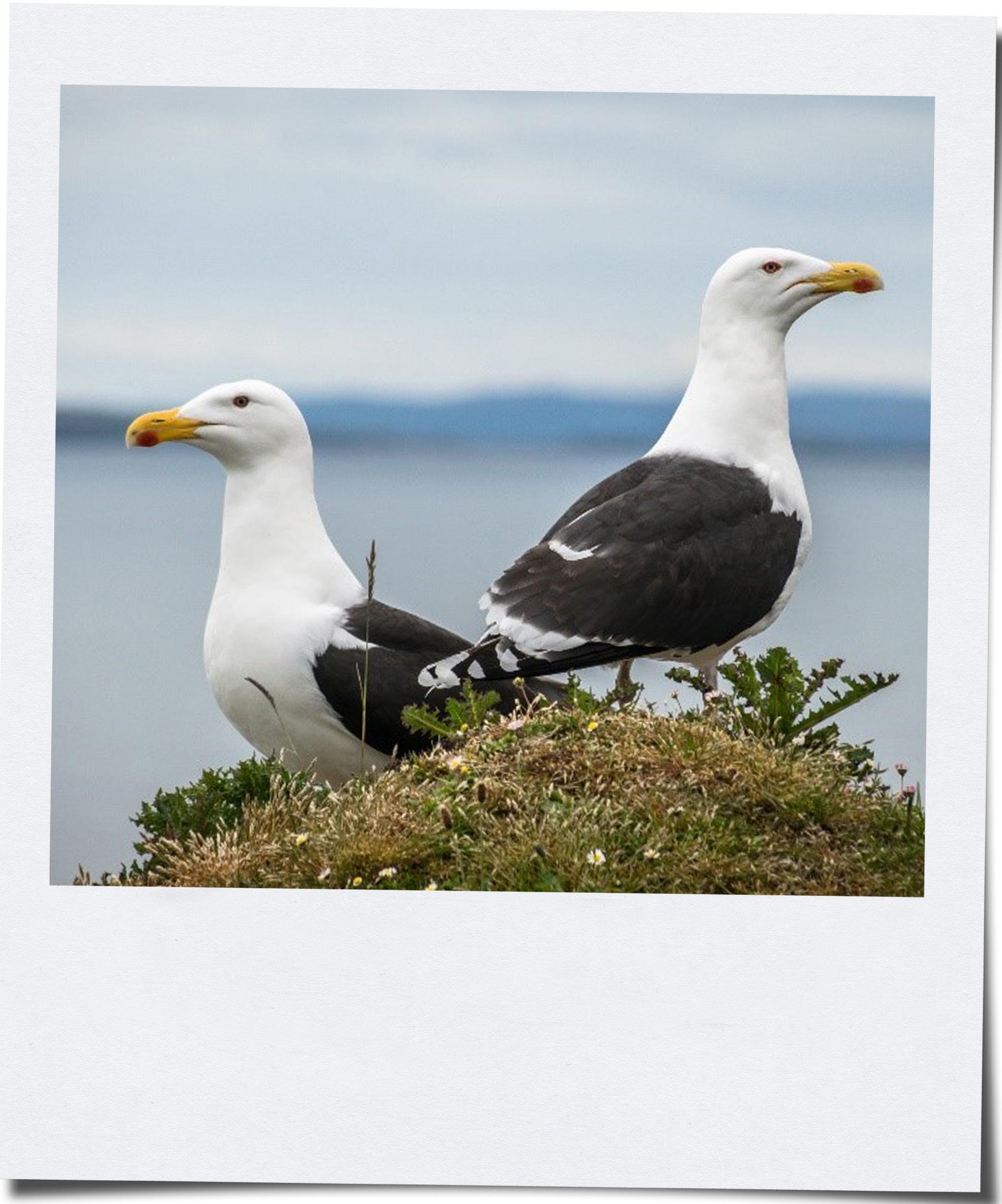
4 minute read
Seabirds Count
Since 1986, annual monitoring of seabird colonies has been conducted by the Seabird Monitoring Programme (SMP) and volunteers. This programme is a partnership of 19 organisations is coordinated by JNCC. Annual, sample-based trends in breeding abundance and productivity from the SMP are augmented with periodic censuses of the entire breeding population. These monitor changes in population distribution and abundance that may not be detected by sampling and provide independent validation of trends estimated annually by SMP. Seabirds Count is the fourth census of breeding seabirds to occur in Britain and Ireland. It aims to better understand how our seabird populations are changing and give an indication of what might be the drivers of these trends. Seabirds Count
In late May, our experts travelled to the Outer Hebrides to carry out Seabirds Count surveys. A total of 13 surveyors, across four weeks, took on the task of counting all breeding seabirds in 135 known seabird colonies on the Isles of Lewis and Harris.
Advertisement

Sites counted by the JNCC survey team in May and June 2019
Week 1
Our first surveys took the team of two JNCC staff and two volunteers to the wild west coast of Lewis. A couple of rainy days allowed time for meticulous mapping, survey planning and site recces.

OS maps of the west coast of Lewis and individual site maps © JNCC
Even with this slow start, the team managed to survey all cliff sections (approximately 35km of coast) and several inland gull colonies in just four days. The seabird species were mainly restricted to Fulmars, Shags and Gulls during the week, and numbers were lower than those counted during the previous Seabird 2000 Census (1998 – 2002). However, the team were treated to magnificent views and were frequently visited by huge White-tailed Eagles.

Views across several cliff sections surveyed in the first week © JNCC
Week 2
Our second week focused on counting all inland Gull colonies as well as ticking off cliff sites in the far north of Lewis and south of Harris.

Shag nest with adult draping its wings protectively over its brood © JNCC
The team were treated to a higher diversity of seabird species. The Butt of Lewis hosted Razorbills, Guillemots, Kittiwakes, Fulmars, Shags and all three of the large Gull species. One of the survey pairs even had a special encounter with an Otter family.

Otter cub and parent © JNCC
Week 3
The Eye Peninsula was the team’s next stop where they were once again graced with visits from White-tailed Eagles. Red Deer were also a common sight whilst walking the moorland that fringes most of the Lewis coast.

A white-tailed eagle leaving its rocky outcrop perch © Dannii Thompson/JNCC
By early June, Gull chicks were more frequently seen. Unlike their smaller cliff-nesting cousins, Kittiwakes, gulls have an extended season. While some adults might still be incubating eggs, others can have chicks close to fledging.

Counting the nesting fulmars along a cliff section © JNCC
Week 4
On our final week we were joined by a recruit from Marine Scotland Science to cover the remaining gaps in the north and south-east of Lewis. These stretches of coast are some of the most remote on the island and in some cases have no road access for several kilometres.

Seabirds Count Project Coordinator, Daisy, counting the shag nests © Dannii Thompson/JNCC
Although no official statistics have been compiled, it looks like the Outer Hebrides have, unfortunately, not escaped breeding seabird declines observed in several other areas of the UK. Fulmars, which were once abundant on Lewis and Harris appear to be in decline. However, Great Black-backed Gulls appear to have expanded their range and numbers have potentially increased since the last census counts.

Adult great black-backed gulls holding their nesting territory whilst the survey team pass by © Danni Thompson/JNCC






